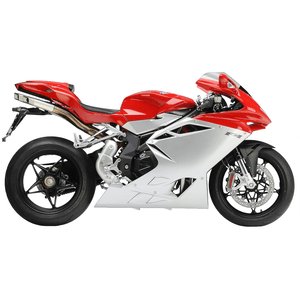MV Agusta F4 1078 RR 312 (2009–2010): A Symphony of Speed and Italian Craftsmanship
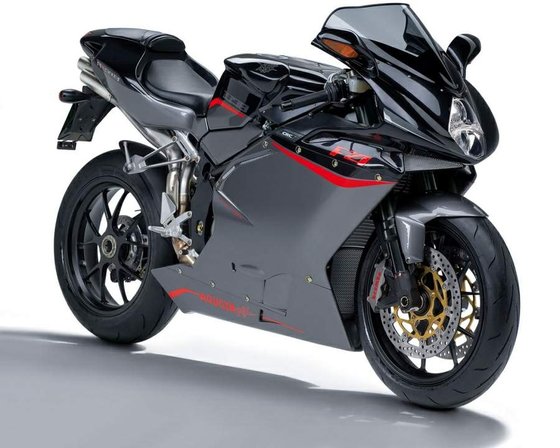
Introduction
The MV Agusta F4 1078 RR 312 isn’t just a motorcycle—it’s a declaration of artistry fused with raw mechanical ambition. Born from a lineage of racing dominance and sculpted by Italian design virtuosos, this machine represents the pinnacle of early-2010s hypersport engineering. With its 190 HP inline-four engine, spine-tingling exhaust note, and chassis tuned for surgical precision, the F4 RR 312 remains a benchmark for riders who crave exclusivity and adrenaline. Having recently thrown a leg over this legend, I can confirm: it’s every bit as intoxicating as its reputation suggests.
Design: A Rolling Masterpiece
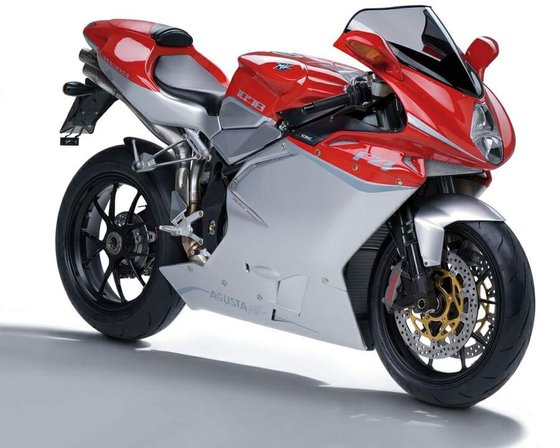
Tamburini’s original F4 design was already iconic, but the RR 312 iteration sharpens its aesthetic blade. The trellis frame, a web of chromium-molybdenum steel tubes, isn’t just structural—it’s a visual centerpiece, contrasting with the sculpted fairings in color schemes like pearl white/black and the classic silver/red. The smoked windscreen (borrowed from the limited F4 CC) and truncated “organ pipe” exhaust tips add a touch of menace, while the red Sachs shock spring peeks beneath the tail like a hidden jewel.
Slip into the 810 mm (31.9-inch) saddle, and the cockpit envelops you. The analog tachometer screams urgency with its 13,000 RPM redline, flanked by a digital speedometer that’ll casually blink 300 km/h (186 mph) when provoked. Every surface—from the fluid reservoir caps to the billet levers—feels milled, not molded. This isn’t a bike; it’s a Milanese sculpture that dares you to ride it.
Engine Performance: The Soul of a Racebike
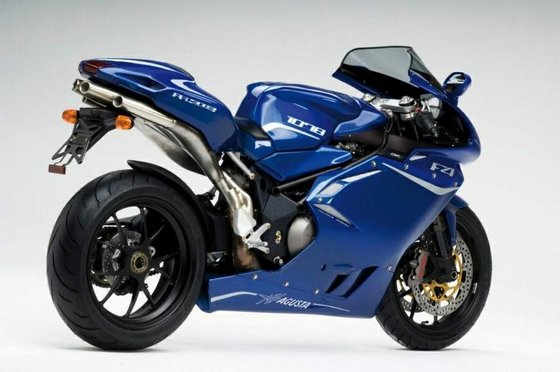
Twist the throttle, and the 1078cc inline-four awakens with a metallic snarl. Derived from Ferrari F1 tech, this engine isn’t just powerful—it’s alive. The 79 mm bore and 55 mm stroke (3.1 x 2.2 inches) let it rev to stratospheric heights, delivering 190 HP at 12,200 RPM and 124 Nm (91.5 lb-ft) of torque at 8,200 RPM. Unlike modern liter bikes that flatten their power curves, the RR 312 thrives on drama. Below 8,000 RPM, it’s polite, almost coy. Cross that threshold, and the intake howl sharpens, the chassis vibrates with purpose, and the horizon starts collapsing.
The 6-speed gearbox, paired with a slipper clutch, snaps through ratios with a satisfying clack. First gear tops out at 141 km/h (87.5 mph), and by sixth, you’re surfing a tsunami of acceleration toward its 300 km/h (186 mph) zenith. Fueling can be abrupt at parking-lot speeds—a reminder this engine was bred for Monza, not Starbucks.
Handling: Precision Over Comfort
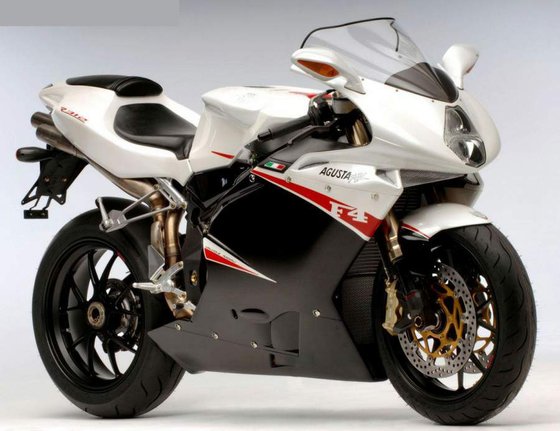
MV Agusta’s chassis philosophy is simple: if it doesn’t make you faster, it doesn’t belong. The steel trellis frame and single-sided swingarm offer a 1,408 mm (55.4-inch) wheelbase, striking a balance between stability and flickability. Paired with 50 mm Marzocchi USD forks (130 mm/5.1 inches of travel) and a Sachs rear shock (120 mm/4.7 inches), the setup is unapologetically track-focused.
Push hard into a corner, and the front end communicates like a seismograph—every pebble, every pavement seam telegraphs through the bars. The Brembo Monobloc calipers (dual 320 mm discs up front) demand respect, with initial bite so fierce you’ll instinctively tighten your core. This isn’t a bike for passive riders; it rewards aggression and punishes hesitation.
Competition: How the F4 RR 312 Stacks Up
The late-2000s hypersport arena was crowded with legends. Here’s how MV’s masterpiece compares:
- Yamaha YZF-R1 (2009): The crossplane crank R1 offered smoother power and superior electronics, but its 182 HP couldn’t match the MV’s theatrical delivery.
- Ducati 1098R: With 180 HP and a desmo V-twin, the Ducati thrilled with low-end grunt but faltered above 240 km/h (149 mph).
- Suzuki GSX-R1000: A 185 HP workhorse, the Gixxer was more practical and forgiving but lacked the MV’s exclusivity.
- Honda CBR1000RR: Honda’s 178 HP entry prioritized usability, making it a better daily rider but a duller track tool.
The F4 RR 312’s ace? It’s not a rational choice. While rivals focused on mass appeal, MV Agusta built a motorcycle for purists—a machine that values passion over pragmatism.
Maintenance: Keeping the Legend Alive
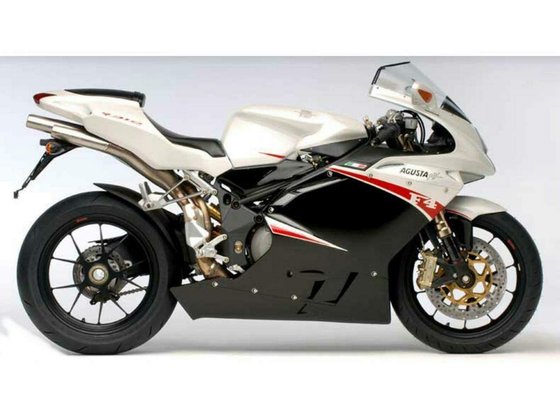
Owning an F4 RR 312 is a labor of love. Here’s what to prioritize:
- Valve Adjustments: With intake clearances of 0.15–0.24 mm and exhaust at 0.20–0.29 mm (cold), expect service every 12,000 km (7,456 miles).
- Oil & Fluids: Use SAE 10W-60 synthetic (3.5L with filter). Brembo DOT 4 brake fluid and ethylene glycol coolant are musts.
- Tire Pressures: 2.3 bar (33 psi) front/rear for street riding—stick with Pirelli Diablo Corsas for period-correct grip.
- Chain Care: The 15/40 sprocket combo wears quickly under hard use. Clean and lube every 500 km (310 miles).
At MOTOPARTS.store, we stock OEM-spec replacements and upgrades, from NGK CR9EIX iridium plugs to racing brake pads that tame those Monobloc calipers.
Conclusion
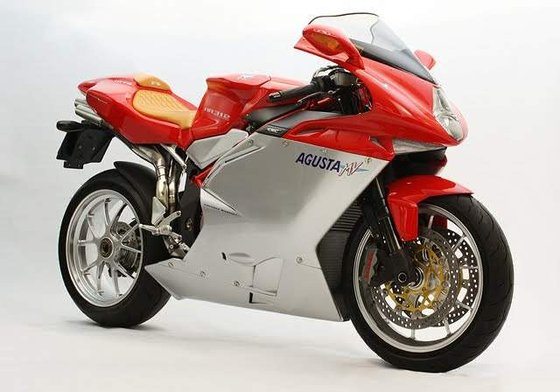
The MV Agusta F4 1078 RR 312 isn’t just a relic—it’s a testament to an era when hypersports wore their insanity proudly. It’s a bike that demands your attention, your skill, and occasionally your mechanic’s patience. But for those who accept its quirks, the rewards are unparalleled: the wail of its engine at full chat, the envy-inducing stares, and the knowledge that you’re piloting one of history’s most beautiful speed machines.
Whether you’re restoring one or pushing it on track days, MOTOPARTS.store has the expertise and components to keep your F4 RR 312 singing its operatic best. After all, legends deserve nothing less.




Specifications sheet
| Engine | |
|---|---|
| Stroke: | Four-stroke |
| Max power: | 140 kW | 188.0 hp |
| Max torque: | 124 Nm |
| Fuel system: | Weber Marelli 5SM multipoint sequential electronic fuel injection |
| Max power @: | 12200 rpm |
| Displacement: | 1078 ccm |
| Max torque @: | 8200 rpm |
| Bore x stroke: | 79.0 x 55.0 mm (3.1 x 2.2 in) |
| Configuration: | Inline |
| Cooling system: | Liquid |
| Compression ratio: | 13.1:1 |
| Number of cylinders: | 4 |
| Valves per cylinder: | 4 |
| Valve clearance (intake, cold): | 0.15–0.24 mm |
| Valve clearance (exhaust, cold): | 0.20–0.29 mm |
| Dimensions | |
|---|---|
| Wheelbase: | 1408 mm (55.4 in) |
| Dry weight: | 192 |
| Wet weight: | 220 |
| Seat height: | 810 mm (31.9 in) |
| Overall width: | 685 mm (27.0 in) |
| Overall length: | 2007 mm (79.0 in) |
| Ground clearance: | 130 mm (5.1 in) |
| Fuel tank capacity: | 21 L (5.5 US gal) |
| Reserve fuel capacity: | 4 L (1.06 US gal) |
| Drivetrain | |
|---|---|
| Clutch: | Wet multi-disc with mechanical slipper function |
| Final drive: | chain |
| Gear ratios: | {'1st': '14/37 (140.9 km/h @ 13,000 rpm)', '2nd': '16/33 (180.6 km/h @ 13,000 rpm)', '3rd': '18/31 (216.3 km/h @ 13,000 rpm)', '4th': '20/30 (248.3 km/h @ 13,000 rpm)', '5th': '22/29 (282.6 km/h @ 13,000 rpm)', '6th': '21/25 (300+ km/h @ 13,000 rpm)'} |
| Transmission: | 6-speed, cassette-style gearbox |
| Rear sprocket: | 40 |
| Front sprocket: | 15 |
| Maintenance | |
|---|---|
| Engine oil: | SAE 10W-60 |
| Brake fluid: | DOT 4 |
| Spark plugs: | NGK CR9EB or NGK CR9EIX |
| Forks oil type: | SAE 7.5W |
| Spark plug gap: | 0.7 |
| Coolant capacity: | 1.9 |
| Forks oil capacity: | 1.43 |
| Engine oil capacity: | 3.5 |
| Tire pressure (rear): | 2.3 bar (33 psi) |
| Tire pressure (front): | 2.3 bar (33 psi) |
| Chain lubrication interval: | Every 500 km |
| Engine oil change interval: | Every 5000 km or 1 year |
| Performance | |
|---|---|
| Top speed: | 312 km/h (194 mph) |
| Standing ¼ mile: | 11.1 sec |
| Power/weight ratio: | 0.9896 HP/kg |
| Chassis and Suspension | |
|---|---|
| Frame: | CrMo steel tubular trellis (TIG welded) |
| Trail: | 104 mm (4.1 in) |
| Rear tire: | 190/55-z-17 |
| Front tire: | 120/70-z-17 |
| Rear brakes: | Single 210mm disc, Brembo 4-piston caliper |
| Front brakes: | Dual 320mm floating discs, Brembo monobloc 4-piston radial calipers |
| Rear suspension: | Sachs monoshock, high/low-speed compression damping and hydraulic preload adjustable |
| Front suspension: | 50mm Marzocchi USD forks, rebound/compression damping and preload adjustable |
| Rear wheel travel: | 120 mm (4.7 in) |
| Front wheel travel: | 130 mm (5.1 in) |



